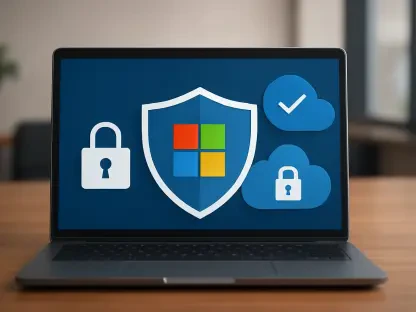Understanding the ClickFix Campaign in the Hospitality Sector
The hospitality industry, a cornerstone of global commerce, faces an escalating threat from sophisticated cybercrime campaigns, with the ClickFix operation emerging as a particularly insidious challenge. This campaign specifically targets hotels and lodging businesses, exploiting their digital infrastructure to steal sensitive data and orchestrate further attacks. As hotels increasingly rely on online booking platforms, the risk of such breaches has grown, exposing not just businesses but also their customers to significant harm. This report delves into the mechanics and implications of this cyber threat, shedding light on a critical issue for the sector.
At the heart of the ClickFix campaign is its focus on the hospitality sector, an industry uniquely vulnerable due to its handling of vast amounts of personal and financial information through platforms like Booking.com and Expedia. These digital systems, while essential for operations, provide a lucrative entry point for cybercriminals seeking to harvest credentials and customer data. The campaign capitalizes on this dependency, using deceptive tactics to infiltrate systems and extract valuable information for illicit purposes.
The impact of ClickFix is twofold, affecting both hotels and their guests in distinct but interconnected ways. For hotels, the primary goal of attackers is credential theft, gaining unauthorized access to booking systems to siphon off data. For customers, the consequence often manifests as secondary phishing attacks, where stolen reservation details are used to craft convincing scams. This dual targeting amplifies the campaign’s reach, making it a pressing concern for all stakeholders in the hospitality ecosystem.
Mechanics and Strategies of the ClickFix Campaign
Attack Methodologies and Techniques
ClickFix employs a range of cunning tactics to penetrate hotel systems, with fake error messages on compromised websites standing out as a primary method of deception. These messages trick users into downloading malicious software under the guise of necessary updates, thereby installing malware directly onto devices. Additionally, phishing emails that mimic trusted platforms like Booking.com exploit the trust of hotel staff, prompting them to disclose sensitive login information.
The attack chain is notably multi-staged, beginning with redirection URLs that guide victims to fraudulent reCAPTCHA challenges designed to lower defenses. Once engaged, victims are prompted to execute malicious PowerShell commands, which deploy malware such as PureRAT—a remote access Trojan with capabilities for data theft, keylogging, and system control. This layered approach ensures that attackers can maintain persistent access to compromised systems for extended exploitation.
A key element of ClickFix’s success lies in its manipulation of urgency and trust, particularly by referencing urgent booking issues or last-minute reservations in communications. Such tactics prey on the hospitality industry’s emphasis on rapid response to customer needs, making staff more likely to act without thorough verification. This psychological manipulation underscores the campaign’s sophisticated blend of technical and social engineering strategies.
Scope and Scale of the Operation
The ClickFix campaign has demonstrated remarkable endurance, with activity spanning several months from early in the current year and showing no signs of abating. Researchers have identified hundreds of malicious domains associated with this operation, pointing to a sprawling network designed to sustain long-term attacks. This extensive infrastructure highlights the organized nature of the threat actors behind the campaign and their commitment to maximizing impact.
Evidence suggests that ClickFix is both profitable and resilient, fueled by an underground economy where stolen credentials and personal data are traded for financial gain. The ability to monetize compromised information ensures the campaign’s persistence, as attackers reinvest profits into refining their methods. This economic cycle poses a significant barrier to disrupting such operations through conventional means.
Further validating the campaign’s significance, studies from major cybersecurity entities like Microsoft and Cofense have noted the growing adoption of ClickFix as a malware delivery mechanism. Their findings align with ongoing observations, confirming that the hospitality sector remains a prime target due to its data-rich environment. The convergence of research underscores the urgent need for tailored defenses against this evolving threat.
Challenges Posed by ClickFix to the Hospitality Industry
The hospitality sector’s heavy reliance on digital booking systems creates inherent vulnerabilities that ClickFix expertly exploits. These platforms, while streamlining operations, store vast troves of personal data, making them prime targets for cybercriminals seeking high-value information. The ease of access to such systems through phishing and malware amplifies the risk, as a single breach can compromise entire databases.
A particularly troubling aspect of ClickFix is its cascading effect, where an initial breach at a hotel level triggers secondary attacks on customers. Once attackers gain access to reservation details, they use this information to craft targeted phishing scams, often impersonating booking platforms to steal financial data from unsuspecting guests. This ripple effect significantly broadens the scope of damage, affecting trust in the industry as a whole.
Addressing these challenges requires a multifaceted approach, combining enhanced security protocols with heightened user awareness. Hotels must prioritize robust authentication measures to protect access to critical systems, while also educating staff on recognizing phishing attempts. Simultaneously, informing customers about potential scams can reduce the success rate of secondary attacks, helping to mitigate the broader impact of campaigns like ClickFix.
Cybersecurity Implications and Industry Regulations
The ClickFix campaign reveals critical cybersecurity implications for the hospitality sector, emphasizing the urgent need for defenses against phishing, malware, and social engineering tactics. As attackers continue to refine their methods, businesses must adopt comprehensive security frameworks that address both technical vulnerabilities and human factors. Failure to do so risks not only financial loss but also reputational damage in an industry built on trust.
Compliance with data protection standards is another vital consideration, as securing access to booking platforms through measures like multi-factor authentication can significantly reduce breach risks. However, many hospitality businesses still lack the resources or expertise to implement such safeguards effectively. This gap highlights a pressing need for greater support and education on cybersecurity best practices within the sector.
Compounding the issue is the absence of specific regulations tailored to cyber threats in hospitality, leaving businesses without clear guidelines for protection. While general data protection laws exist, they often fail to address the unique challenges faced by hotels in managing online platforms and customer interactions. Developing industry-wide standards and policies is essential to ensure consistent and effective responses to threats like ClickFix.
Future Outlook for Combating ClickFix and Similar Threats
Cyber threats like ClickFix are likely to evolve, with attackers potentially refining their techniques or shifting focus to other data-rich industries. The adaptability of such campaigns suggests that hospitality businesses must remain vigilant, anticipating changes in attack patterns over the coming years. Staying ahead of these developments will require continuous monitoring and rapid adaptation to emerging risks.
Emerging cybersecurity technologies offer promising avenues for countering these threats, with advanced threat detection systems and machine learning tools improving the ability to identify malicious activity in real time. Additionally, regular employee training on recognizing suspicious communications can bolster human defenses against social engineering. Integrating these solutions into daily operations is crucial for building resilience against future campaigns.
Collaboration between cybersecurity researchers, hospitality businesses, and regulators will be key to staying ahead of threat actors. Sharing intelligence on indicators of compromise and attack methodologies can help create a unified front against cybercrime. By fostering such partnerships, the industry can better protect sensitive data and maintain customer confidence in an increasingly digital landscape.
Conclusion and Recommendations for the Hospitality Sector
Reflecting on the detailed exploration of the ClickFix campaign, it becomes evident that its sophisticated methodology poses a severe risk to both hotels and customers through credential theft and secondary phishing attacks. The broader cybersecurity implications underscore a critical vulnerability within the hospitality sector, driven by its reliance on digital systems. This analysis highlights the urgent necessity for robust defenses to combat such multi-layered threats.
Looking ahead, actionable steps emerge as vital for mitigating future risks. Hotels need to leverage indicators of compromise to detect and block malicious activity, while promoting skepticism toward unsolicited communications among staff and guests proves essential. Implementing stringent security measures, such as multi-factor authentication and regular system audits, offers a strong foundation for protection.
Ultimately, the hospitality industry must prioritize cybersecurity as an integral part of business operations to safeguard customer trust. By investing in advanced threat detection and fostering collaboration with cybersecurity experts, businesses can anticipate and counter evolving threats. This proactive stance promises to fortify the sector against the persistent challenges posed by campaigns like ClickFix, ensuring a safer environment for all stakeholders.









